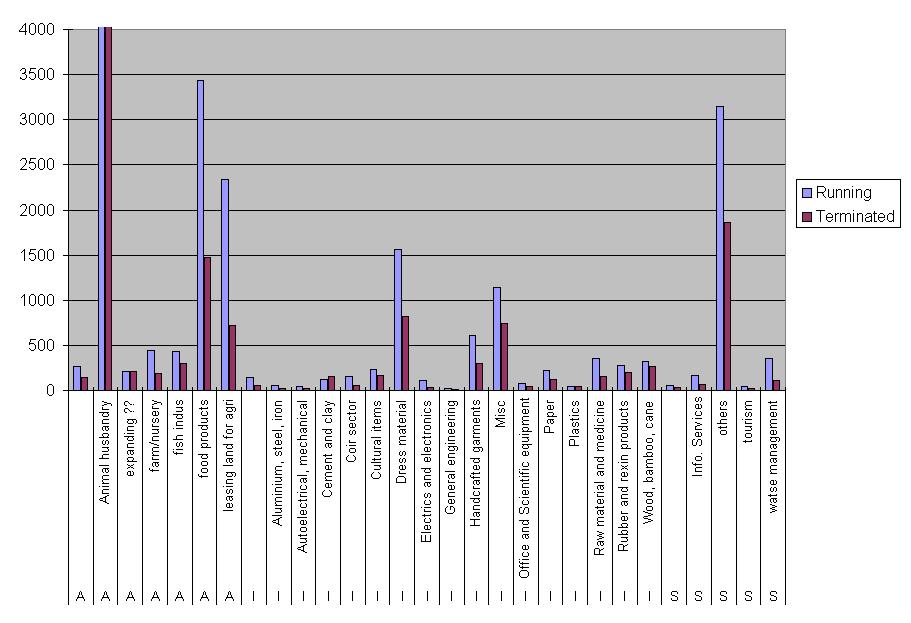Kudumbashree
From Udaimicrofin
KudumbaShree project
One of the aims of this project is also to analyze the data provided to us by Kudumbashree (KuSh) about various Microenterprises operating in Kerala in various sectors of the economy. We shall also attempt to analyze trends, patterns, anomalies for different categories of MEs, as detailed as possible. This page documents all the relevant literature review and data analysis aspects that are needed for the KuSh database. Also all the results of the analysis have been documented.
Proposed deliverables for KuSh project:
- Study of KuSh model for microfinance: Identify strong points, possible shortcomings and improvements, based on comprehensive survey of MFIs, evalauation parameters, and impact assessments
- Relate theoretical estimates with the actual results obtained from the MESurvey database and identify how well the established parameters can help analyze the KuSh database. Also identify anomalies and get advice from them on possible reasons
- Prepare a white paper to be submitted to KuSh reagrding our findings, and any improvements that we can suggest for making the process of selecting and evaluating MEs and data mangement system more smoother
- Also help KuSh with technical help for the Recovery Information System and State wide survey to be shortly launched.
Dsecription of Database
The database is quite comprehensive and lists the MEs on various data parameters. Some important ones are described
- Two major Tables (Tble_Enterprise_Details and Tble_Enterprise_Terminated) listing various data collected from the two kinds of MEs
- The data collected is quite comprehensive, with major highlights given below
- Sector (A:Agriculture, I:Industry, S:Services)
- Category (Subcategory within each sector , given in tables category_ag, category_ind)
- Reason for stopping and reason for starting are also given (reason, reason_to_start)
- Activity: Type of ME inside each subcategory (category_ag_fd, category_ind_rub etc)
- Scheme under which ME was funded (PolicySource)
- Training and Facilitator for the ME
Analysis
Sector wise distribution of MFI performance
1) Analysis of the how MFIs fared across different subsectors, as shown here. The major categories are shown at the bottom with the subsector shown above it. A few immediate observations can be made:- Most MEs supported by KuSh are in the agriculture sector, with a significant majority in animal husbandry (dairy, eggs, meat etc) or food products. Also there seems to be a similar ratio between the running and terminated MEs across the different sectors, for all those MEs which have a significant size. This might be interesting, since it initially seems to show that success of an ME is not strongly correlated with the kind of ME.
- For those MEs with a small distribution, there isnt any noticeable trend. In some cases, the rate of failure seems to be same as or even higher. This might be due to many reasons, but this is probably why there are so few of them.
- Directions to look into: Skill Background for diff sectors, investment required, skill required, reasons for stop and start.
Region wise Distribution of MFI performance
1) Analysis of how MFIS fared across different districts. Thus has quite a bit of variation between different regions in terms of the MFI success rates. For example, while disctrict 11 has a high rate of success, distrcit 23 has nearly equal number of failed and successful MFIs.- Distrcit based analysis of MFI success can lead to some further investgations into the economic background of the people, education and skill levels, traditional occupations, what kind of MFIs were set up etc.


